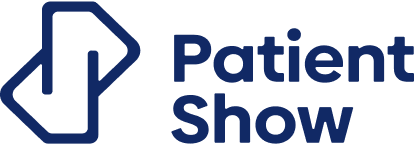Every successful practice aims for growth. However, growth without a solid operational foundation is unsustainable and risky. Before focusing on increasing your patient base, expanding services, or boosting revenue, it’s crucial to ensure that the day-to-day operations of your practice are running smoothly. A well-organized and efficient operation helps prevent costly mistakes, improves the patient experience, and sets the stage for long-term growth.
In this blog, we’ll discuss the key steps necessary to strengthen the operational foundation of your practice, ensuring you’re ready for sustained growth and success.
Streamline Operations
Efficiency is key in any healthcare practice. With the demands of managing patients, appointments, finances, and communications, it’s easy for things to fall through the cracks without the right systems in place. Streamlining your operations through the use of technology and practice management software can help reduce errors, save time, and improve the overall patient experience.
Practice Management Software
The right practice management software can transform how your office operates. Automating routine tasks such as billing, scheduling, and patient communications allows your staff to focus on more important aspects of patient care.
- Automated Billing: Manual billing processes are not only time-consuming but also prone to human error. A practice management system can automate billing, ensuring that claims are submitted promptly and follow-ups are conducted on time. This reduces the chances of delayed or lost revenue due to unpaid claims or overlooked bills.
- Scheduling: An automated scheduling system helps reduce double bookings, missed appointments, and scheduling errors. Patients can book, reschedule, or cancel their appointments online, which saves time for both staff and patients. Some systems can even send automated appointment reminders via email or text, reducing no-show rates.
- Patient Communications: Practice management software can also streamline patient communications, making it easier to send appointment reminders, treatment follow-up messages, and recall notices. This fosters stronger communication between your practice and patients, helping to build trust and loyalty.
Investing in software that simplifies administrative processes allows your team to focus on providing the best care possible while reducing inefficiencies that could hinder growth.
Staff Training
Your practice’s staff is the backbone of your operations. Even with the best tools in place, a lack of proper training can lead to errors, poor customer service, and missed growth opportunities. Regularly training your team ensures they are up to date with the latest best practices, technology, and customer service standards.
Customer Service Training
Exceptional customer service is key to building patient loyalty and encouraging word-of-mouth referrals. Your staff members are often the first point of contact for patients, whether on the phone or at the front desk. Therefore, they should be trained in handling inquiries, scheduling appointments, and addressing patient concerns in a polite, empathetic, and professional manner.
- First Impressions Matter: Patients who feel welcomed and valued by their first point of contact are more likely to continue using your services. Training your front office team on how to greet patients, manage calls efficiently, and provide clear, helpful information is essential.
- Handling Difficult Situations: Healthcare settings can sometimes be stressful for patients. Staff should be trained on how to handle difficult or emotional situations calmly and with empathy. This can include dealing with anxious patients, managing billing disputes, or handling complaints.
Technology and Software Training
With the growing reliance on digital tools and software, your team must be proficient in using these systems. Regular training on how to effectively use your practice management software, digital charting systems, and other technological tools ensures that your team is efficient and accurate in their work.
- Stay Current with Updates: Software often undergoes updates that bring new features or changes to the interface. Providing ongoing training ensures that your staff stays current with these changes, preventing confusion or delays in using the software effectively.
- Cybersecurity Awareness: Since healthcare practices handle sensitive patient data, cybersecurity should be a top priority. Make sure your staff is trained in the best practices for keeping patient data secure, such as using strong passwords, recognizing phishing scams, and following HIPAA regulations.
Training for Growth
If you’re aiming for growth, your staff needs to be prepared for an increasing volume of patients. As your practice expands, roles may shift, and new responsibilities may emerge. Conducting regular training sessions to prepare your staff for these changes will help ensure a seamless transition as your practice grows.
Know Your Numbers
Understanding the financial metrics that drive your practice is critical to ensuring sustainable growth. Without a clear picture of your financial health, you won’t be able to make informed decisions or spot areas that need improvement. The following metrics are essential for gaining a comprehensive understanding of your practice’s financial foundation:
Cost to Acquire a New Patient (CTANP)
The Cost to Acquire a New Patient (CTANP) is the total amount you spend on marketing and advertising divided by the number of new patients you acquire. Knowing this number is essential for determining whether your marketing efforts are paying off. If your CTANP is too high, you may need to refine your marketing strategies or adjust your budget.
- Evaluate Marketing Effectiveness: Regularly review how much you’re spending on different marketing channels, such as digital ads, direct mail, or community events, and assess how many new patients these efforts bring in. Understanding which channels deliver the best return on investment (ROI) allows you to focus your efforts on the most effective strategies.
Total Advertising Spend
Your total advertising spend includes all the costs associated with promoting your practice, from online ads to print materials. Tracking this helps you allocate your budget efficiently. For example, you may find that social media ads bring in more patients for less cost than traditional advertising, allowing you to reallocate funds accordingly.
Lifetime Value (LTV) of a Patient
The Lifetime Value (LTV) of a patient refers to the total revenue a single patient generates throughout their relationship with your practice. This metric helps you understand how valuable each new patient is to your long-term success.
- LTV Calculation: To calculate LTV, estimate the average amount a patient spends at your practice annually and multiply that by the number of years they typically stay with you. Knowing this number can help you make informed decisions about how much you’re willing to invest in acquiring new patients.
Cost of Goods Sold (COGS)
Cost of Goods Sold (COGS) refers to the direct costs associated with providing a service, including materials, lab fees, and other expenses. Understanding your COGS allows you to price your services correctly and ensure profitability.
- Monitor Margins: By comparing your COGS to the revenue generated by each service, you can determine which services are the most profitable and which may need adjustment in pricing or delivery. Keeping your COGS low while maintaining high-quality service is key to maximizing your profit margins.
Why It Matters
A strong operational foundation is essential for preventing costly mistakes and ensuring a seamless patient experience. Practices that are disorganized or inefficient risk losing patients due to long wait times, poor communication, billing errors, or subpar customer service. By focusing on streamlining operations, regularly training your staff, and closely monitoring your financial metrics, you can avoid these issues and create a practice that’s prepared for sustainable growth.
Seamless Patient Experience
A well-oiled operation ensures that patients have a smooth and stress-free experience from the moment they book an appointment to when they leave your office. When administrative tasks are automated, and staff are properly trained, the patient experience becomes more streamlined, leading to higher patient satisfaction and loyalty.
Growth Readiness
Before expanding your practice, adding new services, or increasing patient volume, you must ensure that your foundation is solid. Practices that grow too quickly without a strong operational base often struggle with maintaining quality service, which can result in patient loss and operational breakdowns. By focusing on the fundamentals first, you’ll be better prepared to scale your practice without compromising on quality.
Build on a Strong Foundation
Growth is a goal for many practices, but it’s impossible to achieve without a strong operational foundation. By streamlining your operations, regularly training your staff, and knowing your financial numbers inside and out, you’ll set the stage for long-term success. A well-oiled operation not only prevents costly mistakes but also ensures a seamless patient experience that keeps patients coming back and referring others. With these solid fundamentals in place, your practice will be ready to grow and thrive for years to come.
Ready to grow your practice? Fill out the form below to claim your free strategy session and let Patient Show craft the perfect solution for your needs.



